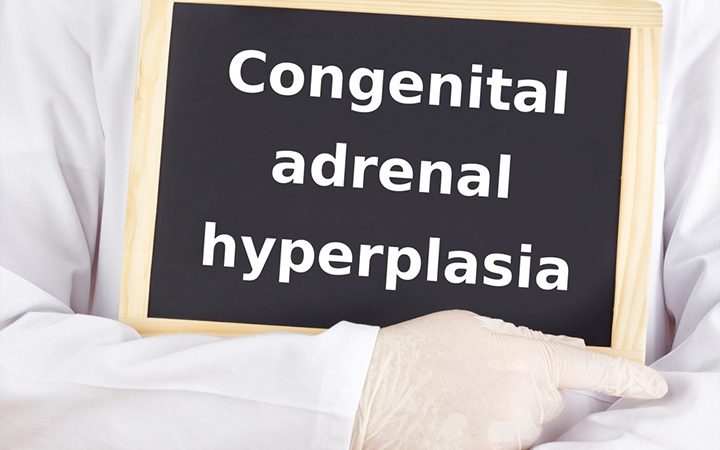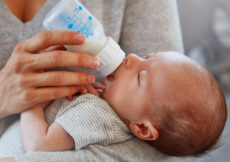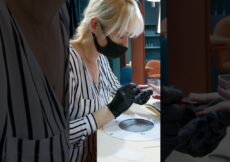Congenital adrenal hyperplasia (CAH) is an inherited disorder of the adrenal glands. Adrenal glands are located above the kidneys, and they produce three types of hormones.
- Cortisol: Regulates energy, blood pressure, and blood sugar levels and helps in recovery from severe illnesses
- Aldosterone: Regulates the amount of salt and water in the body
- Androgens: A group of hormones responsible for the development of male characteristics
People with CAH cannot produce these hormones properly, and this hormonal imbalance can cause serious illness, ambiguous genitalia, premature puberty, growth problems, and other health issues. However, early diagnosis and treatment can help children with CAH to live a normal and healthy life (1).
Read this post to know more about the types, symptoms, treatment, prognosis, and prevention of CAH in babies.
Types Of CAH
In about 95 percent of cases of CAH, the adrenal glands lack an enzyme called 21-hydroxylase needed to process cortisol and aldosterone. CAH caused by this missing enzyme is also called the 21-hydroxylase deficiency.
The following are the two forms of 21-hydroxylase deficiency (1).
1. Classical CAH
- It is the most severe form of the disease.
- The body cannot produce cortisol and has issues regulating blood pressure, blood sugar, and the body’s response to illness or injury.
- Many children with classical CAH cannot secrete aldosterone and cannot maintain adequate salt levels in their bodies.
- The body produces more androgens than needed.
- If not treated on time, issues with salt levels in the body may lead to fatal dehydration.
The classical CAH is further sub-classified into the following types (2).
- Salt-wasting CAH: It is a more common and severe form. Babies with salt-wasting CAH lose too much sodium and water through urine, leading to increased potassium in the body, causing dehydration and very low blood pressure.
- Simple- virializing CAH: It is a less severe form and does not cause the body to lose sodium and water.
2. Non-classical CAH
- It is the most common form of CAH but is mild in severity.
- The cortisol production is unaffected, but androgens, such as testosterone and 17-hydroxyprogesterone, are produced in more than the required amounts.
- Non-classical CAH has no impact on aldosterone production.
Signs And Symptoms Of CAH
The following are the signs and symptoms of classical CAH (1) (3).
- Weight loss
- Vomiting
- Diarrhea
- Severe dehydration
- Low blood pressure
- Heart problems
- Coma
- Life-threatening shock
- Newborn males may have enlarged penis, and the scrotum may be more brownish.
- Newborn females may have an unusual appearance or ambiguous genitalia (external genitalia may resemble male sex organs while they have normal internal sex organs such as uterus and ovaries)
- Older children may hit puberty sooner than usual, have rapid growth, short height as adults, and problems with fertility.
The following are the signs and symptoms of non-classical CAH that may often be prominent as the baby grows older.
- Early puberty
- Oily skin
- Excess Acne
- Early development of armpit hair and pubic hair
- Rapid growth during adolescence
- Short height as adults
- Irregular menstruation in women
- Problems with fertility
- Facial hair and deep voice in adolescent women
Causes And Prevalence Of CAH
CAH is a genetically transmitted disease. Babies born to parents who are both carriers of the mutated gene develop CAH.
CAH caused by 21-hydroxylase deficiency affects both girls and boys equally. One in 10,000 to 18,000 newborns is born with classical CAH. However, the non-classical form is more common (1).
Diagnosis Of CAH In Newborns
All infants born in the United States of America are screened for CAH by a blood test. If the newborn tests positive for CAH, the pediatrician may order additional blood tests to check for levels of serum electrolytes, aldosterone, renin, and cortisol.
The doctor might also order other diagnostic tests such as X-rays or ultrasounds of the abdomen and the pelvis to view the adrenal glands and the structure of the internal genitalia. In addition, X-rays of the left hand and wrist may show that the child’s bones appear to be those of someone older than their age (4). Genetic testing and analysis can confirm CAH but are rarely needed (1).
Treatment For CAH
The following are the different treatment plans for CAH (1) (2).
1. Medications
- The baby will be prescribed oral medication/supplementation of cortisol or glucocorticoids such as hydrocortisone, prednisone, or dexamethasone.
- The medication will replace missing cortisol and decrease the levels of androgens in the body.
- If the baby is unable to make aldosterone, the doctor may prescribe a medicine as an aldosterone replacement.
- During any kind of physical stress, such as an illness, injury, or in case of need of surgery, the child will need high doses of cortisol, which are called “stress doses.”
- The stress dose might be needed in scenarios such as when the baby has a fever higher than 101°F, diarrhea, repeated vomiting, a major injury, or a need for surgery.
- You must always have an emergency hydrocortisone kit at home. The kit has an injectable medicine with a syringe that the doctor will show how to use.
- The doctor may also recommend that older toddlers wear a necklace or a bracelet that states “adrenal insufficiency.”
- Since babies with CAH lack hormones, they will need different types of medications for life.
2. Surgical correction
- Some female infants might need surgery to correct the atypical external genitalia.
- The surgery can be done at the age of six months or later.
3. Additional therapies
- Additional therapies may be needed to address potential complications of CAH, such as early puberty or growth disorders.
- The doctor may advise therapies for suppression of puberty, or growth hormone might be recommended.
- The child might be referred to specialists if they experience fertility problems once they grow up.
- The pediatrician might also refer you to a nutritionist.
When the baby is young, they must see the pediatric endocrinologist every three to four months for blood tests, X-rays, and examination. As the child grows older, they may not need to go to the doctor often.
Complications Of CAH
The following are some possible complications of CAH (1) (2) (4):
- Advanced bone aging and osteoporosis
- Increased body weight
- Electrolyte imbalance
- Insulin resistance and increased risk of type-2 diabetes
- Increased blood pressure
- Testicular adrenal rests tumors (TART)
- Increased risk of a life-threatening adrenal crisis
- Cysts and tumors, especially in ovaries (for girls) and pituitary
Long-Term Implications Of CAH
Children whose treatment begins on time reach normal adult height. Some individuals have problems with fertility, but it can be managed by treatment. It is essential to maintain the right balance of steroids during the treatment to avoid complications such as osteoporosis, hypertension, and obesity in adulthood (5).
Prevention Of CAH
Parents of a child with CAH must consider genetic counseling before planning another child. Prenatal diagnosis can be made in the first trimester by chorionic villus sampling. In the second trimester, it can be diagnosed by measuring the 17-hydroxyprogesterone hormone levels in the amniotic fluid (4).
CAH is an irreversible condition but can be managed with timely and consistent treatment. Keep yourself well informed about the red flags and ask the doctor about how to manage them. If you have a family history of CAH, you must meet a genetic counselor to know your options.
References:
MomJunction’s articles are written after analyzing the research works of expert authors and institutions. Our references consist of resources established by authorities in their respective fields. You can learn more about the authenticity of the information we present in our editorial policy.



































